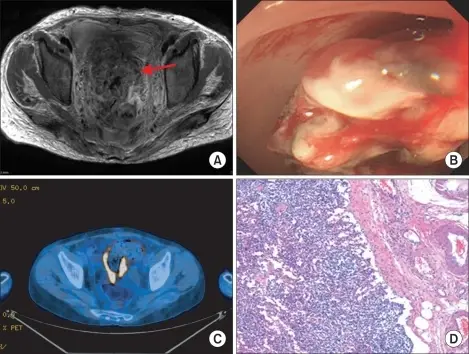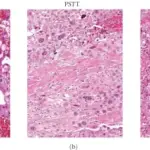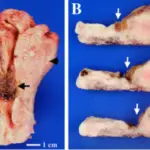Choriocarcinoma is cancer that occurs in a woman’s uterus.
What is the Pathology of Choriocarcinoma?
The pathology of choriocarcinoma is:
-Etiology: The cause of choriocarcinoma is hydatidiform mole, spontaneous abortion, ectopic pregnancy, normal term pregnancy, and hyperemesis gravidarum.
-Genes involved: None.
-Pathogenesis: The sequence of events that lead to choriocarcinoma includes syncytiotrophoblasts and cytotrophoblasts without the formation of definite placental type villi.
-Morphology: The morphology associated with choriocarcinoma shows syncytiotrophoblasts with eosinophilic cytoplasm. They often surround the cytotrophoblasts, reminiscent of their normal anatomical relationship in chorionic villi.
-Histology: The histology associated with choriocarcinoma shows solid sheets of atypical syncytiotrophoblast, cytotrophoblast, and intermediate trophoblast.
How does Choriocarcinoma Present?
Patients with choriocarcinoma typically affect females present at the age range of 20-49 years. The symptoms, features, and clinical findings associated with choriocarcinoma include increased quantitative chorionic gonadotropin, vaginal bleeding, shortness of breath, hemoptysis, chest pain. Chest X-ray shows multiple infiltrates of various shapes in both lungs.
How is Choriocarcinoma Diagnosed?
Choriocarcinoma is diagnosed through elevated HCG levels and imaging.
How is Choriocarcinoma Treated?
Choriocarcinoma is treated by chemotherapy, single-agent methotrexate, or actinomycin-D.
What is the Prognosis of Choriocarcinoma?
The prognosis of choriocarcinoma is poor as choriocarcinoma may come back within a few months to 3 years after treatment.



